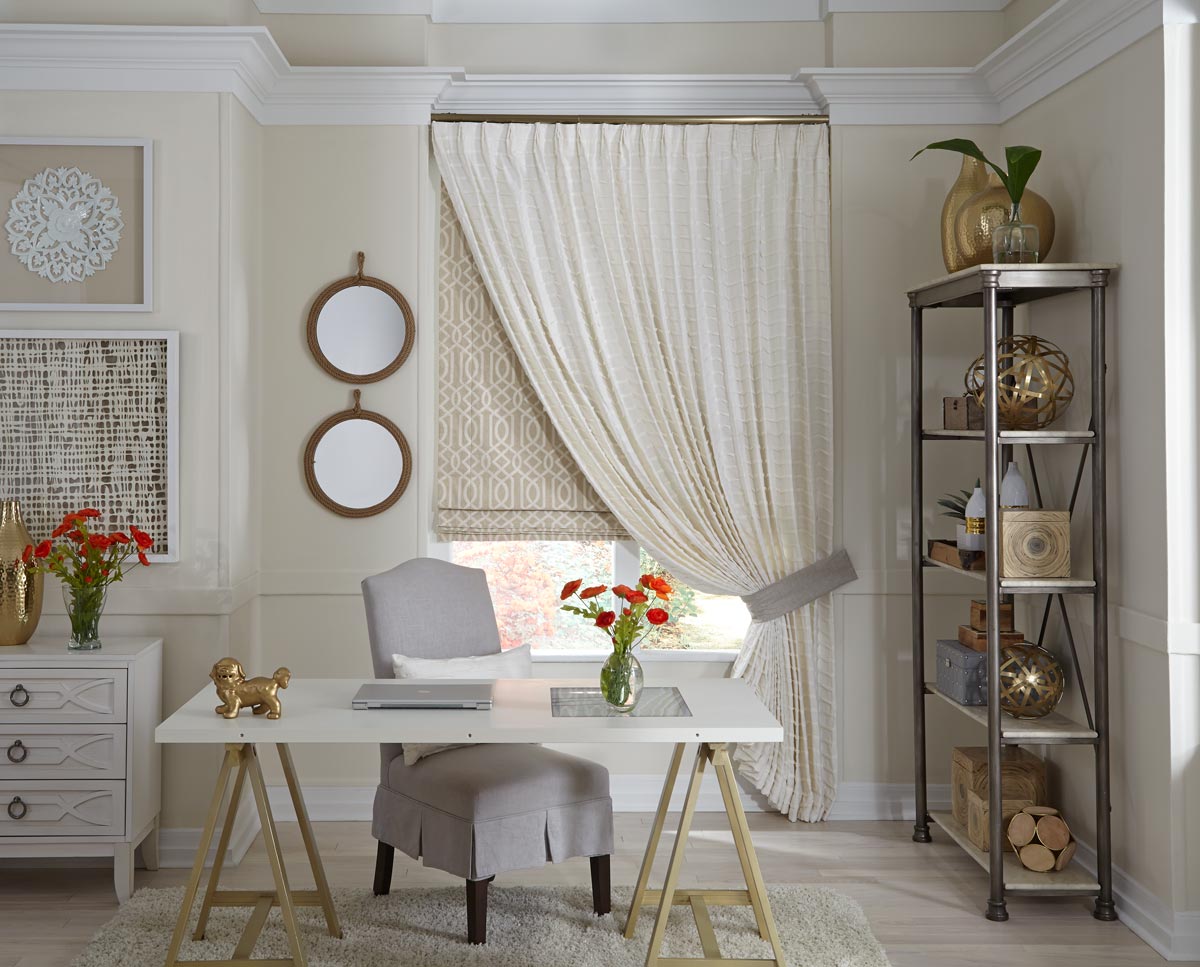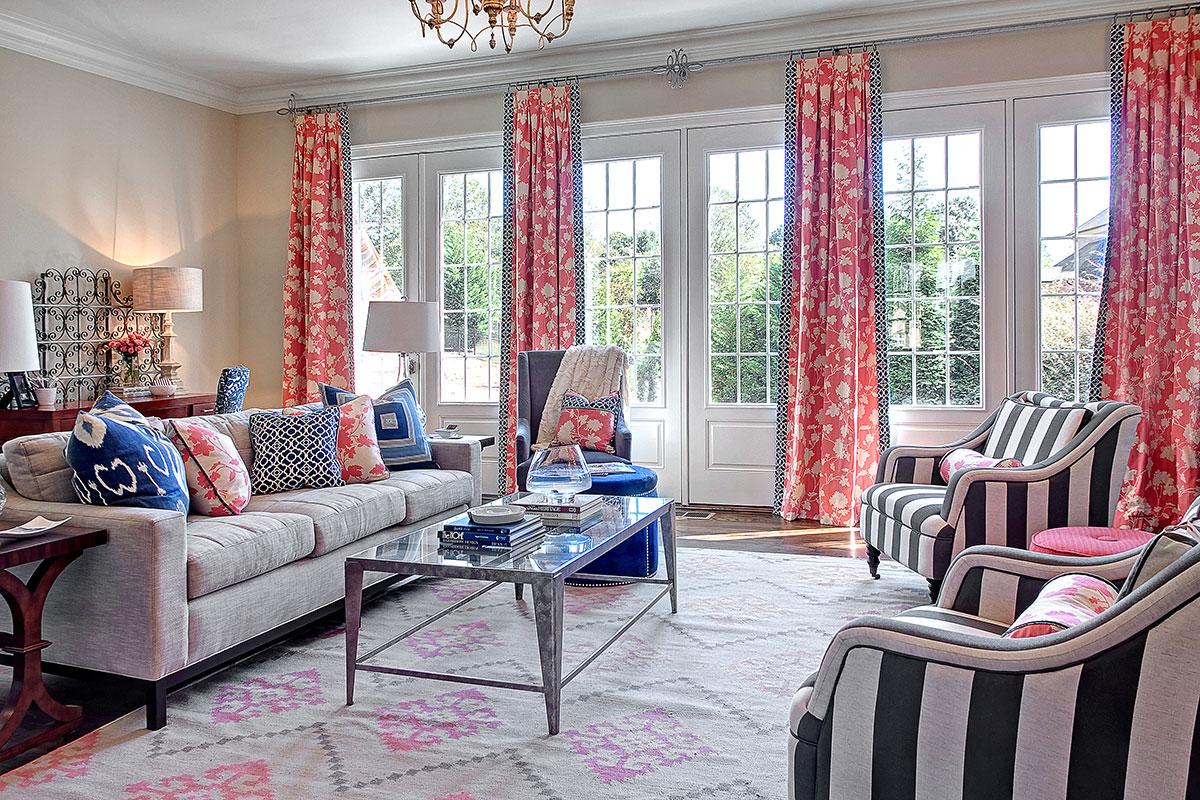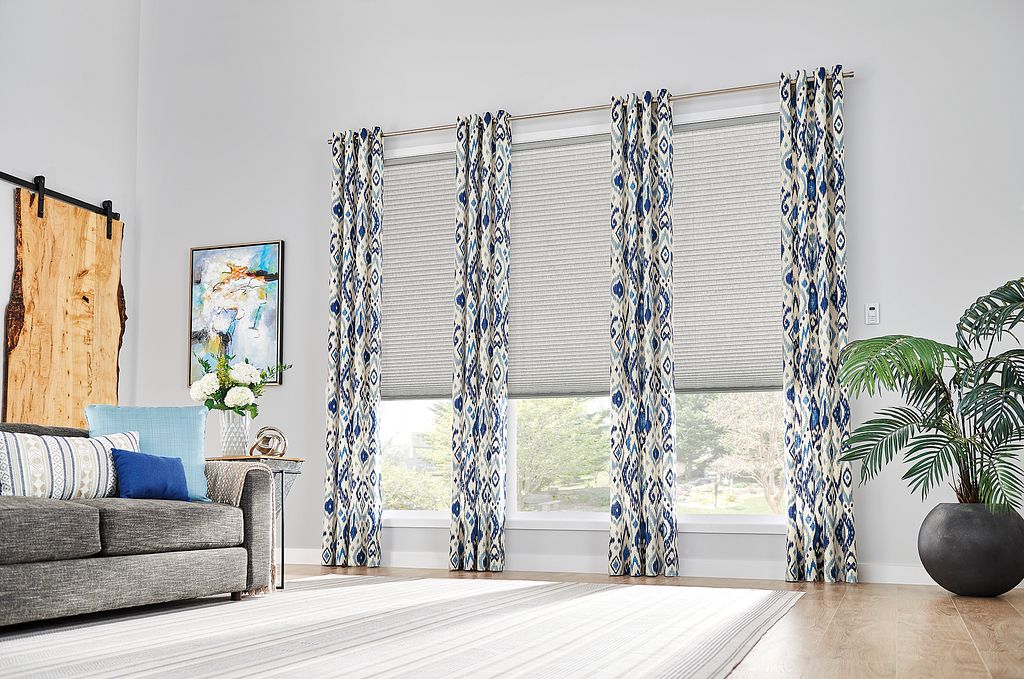
When you are choosing new drapery fabrics, it’s important to know the difference between these two types of window treatments. Curtains use lightweight fabrics and are used in any window, but especially in the kitchen, whereas drapery is made of thicker fabric that is better for privacy in bedrooms. Read on to learn about the most popular drapery fabrics.
Cotton
Cotton is a natural fabric that works best for rooms that don’t get a lot of sunlight streaming in the windows, as it is a lightweight fabric. Cotton fabric is available in a huge selection of colors and patterns from which to choose, so you are sure to find a color or pattern that matches your decor seamlessly, no matter what your style is.
Pros and Cons of Cotton as a Drapery Fabric
There are actually more pros of cotton for a drapery fabric than there are cons, and it is very affordable as well, making it very popular in window treatment fabrics.
Pros Cotton as a Drapery Fabric
- Soft and Breathable
- Machine Washable
- Absorbent
- Good for Sensitive Skin
Soft and Breathable
Cotton is an all-natural fabric that is soft and breathable because air can move through the fabrics, and it can allow moisture of any type to evaporate. These properties make cotton perfect for window treatments in areas where homeowners open their windows for a breeze because the moisture of humid air will evaporate.
Machine Washable
Cotton is considered one of the easiest fabrics to keep clean. You can simply take your drapes down and wash them in your washer and dryer at home, making cotton a favorite fabric for kitchen curtains that may get splashes on them.
Absorbent
Being absorbent also makes cotton window treatments great for both bathrooms and kitchens, which are considered “splash zones.”
Good for Allergy Sufferers
Cotton is also a great fabric for allergy sufferers because it can be cleaned thoroughly and often to reduce allergens in the home.
Cons Cotton as a Drapery Fabric
- Fading
- Bleeding
- Wrinkling
- Shrinking
Fading
Cotton fabrics don’t hold the color very well, and they will eventually fade in bright sunlight, so they don’t last as long with a pristine appearance as some other fabrics.
Bleeding
When your machine launders cotton window treatments, the fabric can bleed in the washer, especially the darker colors. It’s best to wash cotton fabric in cold water if possible to clean them.
Wrinkling
After washing cotton drapes may wrinkle even after they have been dried thoroughly in your dryer. The good point is that usually if you hang these drapes right back up after washing and drying them, any remaining wrinkles will fall out.
Shrinking
The first time you wash cotton fabrics, they can shrink especially if you wash them in hot water. It’s best to use warm water or cold water instead to launder your cotton window treatments.
Linen

Double Box Pleated drapery frames multiple french doors in family room. Unique iron drapery hardware with center medallion that mimics finial design. Coordinating down-feather filled pillows. Room design by Maria Adams Design
Linen is a natural fabric that is made from a long process of the flax plant by spinning the long fibers into quality linen yarn and then making the fabric.
Pros and Cons of Linen as a Drapery Fabric
Pros Linen as a Drapery Fabric
- Eco-Friendly
- Strong Plant Fibers
- Cool to the touch
- Can be Washed
Eco-Friendly Fabric
Linen is considered an eco-friendly product because it is grown as an all-natural plant without using any fertilizers or pesticides. Flax is pest resistant naturally, so no pesticides are needed to grow it.
Strong Plant Fibers
The flax plant has very strong plant fibers to be a long-lasting fabric for window treatments that will stand the test of time without fading or wearing quickly.
Cool to the Touch
Linen is cool to the touch, and it also absorbs moisture, although not quick as much as cotton fabrics.
Can Be Washed
Most linen drapery panels can be home-washed and dried without shrinking or fading.
Cons Linen as a Drapery Fabric
- Wrinkles Easily
- Not Stain Resistant
- Fibers Can Weaken
Wrinkles Easily
Linen can wrinkle quite easily, but when used in drapery, it is hanging from the drapery rod, and this allows the wrinkles to fall out of the fabric pretty quickly.
Not Stain Resistant
Linen isn’t stain resistant, but instead, it will absorb anything that should happen to get splashed on it, and depending on the item, if it’s colored, such as red punch, it will stain your linen fabrics.
Fibers Can Weaken
After quite some time if your linen draperies are exposed to a lot of sunlight, the fibers will weaken over time and become thinner and easier to tear, although this takes many years to happen.
Polyester
 Polyester fabric is often used for home decor and drapery panels. It’s a man-made fabric that, until pretty recently, wasn’t very breathable as it is now.
Polyester fabric is often used for home decor and drapery panels. It’s a man-made fabric that, until pretty recently, wasn’t very breathable as it is now.
Pros and Cons of Polyester as a Drapery Fabric
Pros Polyester as a Drapery Fabric
- Durable
- Easy to Clean
- Wrinkle-Resistant
- Doesn’t Fade Quickly or Deteriorate
- Great Insulator
- Anti-Bacterial
Durable
Polyester is very durable as a fabric for drapes, and it is often used as a thicker alternative to cotton.
Easy to Clean
Polyester drapery panels can be washed at home in your washer and dryer easily, or you can spot clean them with a damp washcloth and a bit of dish soap.
Wrinkle-Resistant
The weight of polyester is heavier than linen or cotton, which allows drapery panels to hang without wrinkling even after cleaning them.
Doesn’t Fade Quickly or Deteriorate
This easy-care fabric doesn’t fade very quickly or deteriorate fast, even when it’s in the bright sunlight for many hours a day.
Great Insulator
The thickness of polyester fabric also lends itself to being a great insulator in your window treatments that will trap warm air next to your windows in the summer and cold air next to them in the winter to make them energy-efficient window coverings.
Anti-Bacterial
Linen is naturally anti-bacterial, so it doesn’t harbor dust and allergens in your home.
Cons Polyester as a Drapery Fabric
- Flammable
- Distorts When Ironed
Flammable
Polyester is a flammable material and is rarely used in kitchens, or in areas where the windows are very close to a heat source of any type.
Distorts When Ironed
After laundering your polyester drapes, you may be tempted to iron them with a hot iron so the wrinkles will all be removed before you hang them back up. Ironing polyester distorts the fibers, and your drapes will not look the same as before, so it’s best to just rehang them after drying them and allow time to let the wrinkles fall out.
Silk
Silk is a designer fabric that is used widely in homes for draperies to furniture upholstery. It’s an all-natural fabric that adds an upscale appearance to your home.
Pros and Cons of Silk as a Drapery Fabric
Pros Silk as a Drapery Fabric
- Strong
- Anti-Wrinkle & Crush Resistant
Strong
Silk is one of the strongest fabrics that you can purchase. It can withstand being pulled and stretched to fit on upholstered furniture without every tearing or ripping, making it a strong textile for draperies.
Anti-Wrinkle & Crush Resistant
Silk fabrics do not wrinkle easily as some other fabrics do, so this makes it a great choice for window treatments. If heavy objects such as furniture are pushed against it, silk window treatments will not crush, but will retain their shape.
Cons Silk as a Drapery Fabric
- Expensive
- Sunlight Damage
- Water Damage
Expensive
Silk is one of the most expensive fabrics on the market for draperies, although faux silk looks the same at a much less expensive price point.
Sunlight Damage
When the sun’s UV rays shine on silk drapery panels, it will cause the fibers to wear down more quickly than any other fabric of choice. It’s best used for windows that don’t get a lot of sunlight in combination with a liner on the rear to protect it from sunlight damage.
Water Damage
Even a few drops of water on silk fabric create a water stain that you can’t remove from it, so it is definitely not a good fabric choice for kitchens and bathrooms.
Need Some Help Selecting The Right Drapery Fabric?
At Window Works Studio, we carry the largest line of fabrics for window treatments in Jamestown, NC. For any application, including lacey and soft to heavy and luxurious and everywhere in between, we have fabric for all of your drapery needs. We offer you a FREE in-home consultation with one of our expert designers to help you choose the best possible drapery treatments in Jamestown, NC. Contact us today to see what we can create together!
Founder of the High Point Chapter of the WCAA. I was a Registered Nurse with a combined experience of 16 years, before obtaining a degree in clothing and textiles. I enjoy working with people and creating beautiful things that enhances my clients’ lives.


